In my opinion, the most important elements of obtaining a quality bird photograph are: 1) Lighting; 2) Proximity to subject; 3) Technique; 4) Research; and, 5) Patience. Part I of this post discussed how I was introduced to bird photography and lighting. The topic of Part II was the second element to obtaining quality images: proximity to the subject. In this final installment of the 'Shooting Birds' series, I'll discuss the final three elements of obtaining quality bird images: 3) Technique; 4) Research; and, 5) Patience.
3) Technique
Your camera settings are going to have a tremendous effect on whether you capture your subject in a clear, sharp, focused image. It is important that you first understand a very basic concept: how shutter speed, aperture and ISO settings are inter-related. It's important because simply putting the camera in 'auto' mode won't cut it for bird photography.
Available light is what ultimately determines your options for shutter speed, and fast shutter speeds (generally 1/1250 and greater) are required to freeze birds that are in flight or feeding. The more light, the more options for shutter speed we have. To increase shutter speeds, the lens aperture can be opened wider (to a smaller number), the ISO (light sensitivity) can be increased to a larger number, or a combination of both can be used.
Higher shutter speeds are most easily obtained on bright, sunny days. You could probably obtain a proper shutter speed at f/8.0 with the ISO at a relatively low 200 - 320. On an overcast day, you might have to stop down to f/7.1 or f/6.3 while increasing the ISO to between 400-800 to obtain the same shutter speed. The higher the ISO is increased, the more your shutter speed will increase and a proper exposure still be obtained. However, at higher ISOs the image becomes noisy, which means it appears grainy. Fortunately, modern technology allows for a relatively large, clear image at ISO 800 and even at up to 2500 on more advanced cameras. For bird photography, you'll rarely have to push past 800. If you do, it's probably raining, anyway.
Once you understand the interplay between shutter speed, aperture, and ISO, the essentials for bird photography are shooting in RAW with AI Servo autofocus mode on high-speed continuous with a dedicated, manually-selected focus point. I prefer to shoot RAW for two reasons: I can leave the white balance as 'Auto' and change it in post-processing if necessary, and RAW images do not degrade as much during processing as a .jpg image does. The fact that I can override my camera's white balance settings in RAW (but not .jpg) is the primary reason why I shoot RAW. When out on the water and surrounded by birds, I don't want to have to remember to adjust the white balance should weather conditions change. It's one less thing that I have to worry about when shooting, especially if I'm out on the water. I don't shoot both RAW and .jpg simultaneously for one reason: it will slow down the frame rate of your camera even with a fast UDMA-compliant CF card, and you can't afford to miss shots when photographing a quick-moving bird that is in flight or foraging for dinner.
AI Servo mode, according to Canon, 'is for moving subjects when the focusing distance keeps changing. When you hold down the shutter button halfway, the subject will be focused continuously.' This is the exact scenario present when we have a bird in flight ("BIF") or are photographing very active birds such a snowy egret, tricolored heron, or reddish egret while foraging for food. (If you're a birder who has never seen a reddish egret hunt, you're really missing something. Aside from the bird itself being possessed of beautiful plumage, its strategy for hunting is to quickly run and stumble around in the water like a drunken sailor in order to stir up the surrounding fish. It will often raise its wings to form an umbrella over the water before it strikes. A entertaining video of this can be seen here: http://www.youtube.com/watch?v=rTSvvEk4_H4)
![[JPG2] IMG_6361](http://farm6.static.flickr.com/5286/5258341654_941304c2b9_z.jpg) My encounters with the reddish egret have been few and far between. Its hap-hazard foraging habits can often take the bird out of the range of a supertelephoto lens rather quickly. This backlit photograph is all I had worth keeping after my visit to Merritt Island last winter.
My encounters with the reddish egret have been few and far between. Its hap-hazard foraging habits can often take the bird out of the range of a supertelephoto lens rather quickly. This backlit photograph is all I had worth keeping after my visit to Merritt Island last winter.
For a truly outstanding photo of a reddish egret taken by another photographer, follow this link:
Now, back on topic. The AI Servo autofocus mode is the one by which to capture your BIF shots or clear shots of very active birds. Keep in mind, though, that the technology isn't perfect. Even if you appear to maintain the bird within the field of view of your lens, a bird's quick and often unpredictable movements can lead to some out-of-focus shots while the lens re-focuses to accommodate these movements. Also, as I often do, a photographer can get so excited by a bird suddenly appearing in close proximity that you begin firing off shots before you have allowed the lens to properly focus. This leads to a series of a dozen up-close but out-of-focus shots of that yellow-crowned night heron that you had been so desperately trying to capture in flight.
I manually set a focus point at the center for photographing birds in flight. Manually setting a focus point (or group of points, if you're using a 7D or more advanced camera) allows the camera and lens to focus more quickly than if the camera was left to make the decision for itself. And when trying to obtain a great BIF shot, speed is king. Optimally, you would like to get the entire bird into focus but the most important part is the bird's head and eyes. Conventional wisdom states that's it best to aim near the bird's head or shoulder area to ensure that the head and eyes are in proper focus. In addition, carefully choose the aperture at which you're shooting. For a smaller bird, shooting at f/5.6 should do the trick. Using an aperture toward the wide-end of the lens such as f/5.6 will also allow you to obtain a fast shutter speed without bumping up your camera's ISO setting too high, and wider apertures provide a more smooth, pleasing blurred background (bokeh) that serves to isolate the subject. (Superior lenses will make the subject almost appear 3-D with minimal post-processing when shot wide open or only slightly stopped down.)
For larger birds, such as the wading birds I love to shoot, I'll use an aperture between f/7.1 and f/9.0 depending on the available light and the color of the bird's plumage. (The effect of the color of a bird's plumage will be discussed in greater detail below.) Stopping down to these apertures ensures a greater depth of field and increases your chance of getting the entire bird in focus. What follows is an entire series of unprocessed RAW images, converted to .jpg format, that I took while sitting in a kayak in the marshlands of Avalon, NJ between two small, tree-filled islands. Yellow-crowned night herons, a notoriously skittish species that I had never photographed, were nesting in the trees and constantly flying back-and-forth between the islands at high speed and at relatively close range. All shots were taken with a Canon 50D, 400 5.6L, f/7.1 @ 1/2500, ISO 250, EV -2/3 with AI Servo mode, Aperture Priority and Evaluative Metering:
1.
2.
3.
4.
5.
6.
![[JPG-Blog]
IMG_3132](http://farm6.static.flickr.com/5045/5258493034_ea6eb40529_b.jpg)
From the above series of six shots, the second is the keeper. In the first, fifth and sixth shots, parts of the bird were clipped from the frame. In addition, the fifth and sixth shots turned out-of-focus as the bird began to fly away from the direction of my kayak. The fourth photo has the bird completely in-focus but would have to be cropped vertically or very tightly, which would degrade the quality of the image. The third image has outstanding feather detail brought out by the early morning sun but one finds the head out-of-focus when viewed large. It would still be acceptable as a small image for the web after cropping but not as a print. The second photo, while lacking in feather detail, is in focus all-around and the red eye, illuminated by the low sun, contains a catchlight. This series demonstrates how difficult it can be to lead and frame a fast-moving bird with a prime supertelephoto lens even when the camera has been set in preparation for capturing a bird in flight. There is also a large dust-spot on these images that would need to be cloned out in post-processing.
Using an aperture between f/7.1 and f/9.0 also helps the photographer when shooting a bird foraging for food. The greater depth of field assists the photographer in capturing an image with the bird's lunch or dinner being in focus as well. I always enjoy a photograph where not only is the bird's head and eye in focus, but the eye and mouth of the prey is also clear. The expression of the prey during the last seconds of its life makes for some interesting shots demonstrating the sometimes harsh results of nature's food chain in effect. In the outstanding photo of the reddish egret linked above, the EXIF data reveals that an aperture of f/8.0 was used, which enabled the photographer to capture both the entirety of the large bird and prey in focus.
When I'm shooting large birds in flight or feeding, I typically set my camera in aperture priority mode rather than manual. This allows me to set a certain aperture, say f/8.0, and the camera will adjust the shutter speed for me as the bird moves around the scene. The reason why I use aperture priority rather than manual is that the camera's light meter readings can change if the bird moves to the muddy banks of the grasslands from the water or suddenly takes off into the sky. In such situations, the exposure changes because the sky will be brighter than the water, which will be brighter than the muddy bank and grasslands. Rather than change the settings manually as the bird moves, which can be impossible, I set the aperture and allow the camera to handle the shutter speed to ensure a proper exposure. If you are looking to maintain a fast shutter speed, it is important that you have the ISO set high enough to consistently allow for one. This could be between 200 and 320 on sunny days, or between 400 and 640- or even up to 800- on cloudy days.
A note should be made about photographing white birds, such as snowy and great egrets. Whites can be very difficult to photograph, whether it is the feathers of a bird or a white football uniform. Even on cloudy days, the whites can provide a washed-out, overexposed look compared to the rest of the image. You also lose important feather detail on a bird with overexposed whites. Most cameras have a highlight warning feature that can be activated from one of the camera's menus. When in use, the areas of the photo that are overexposed will blink black when the image is viewed on the LCD screen. When I'm faced with such a situation, I dial down the aperture to allow less light into the lens (from f/7.1 to f/8.0, for instance), use exposure compensation, or a combination of both. Exposure compensation has the effect of decreasing the exposure in small increments when used toward the left side of 'zero' on your LCD screen. I take several test shots until I am receiving no further highlight warnings on the bird. (More advanced photographers set the proper exposure in such a situation by using spot metering on the white bird and making an adjustment according to the light meter reading in this mode. I have yet to have success with spot metering, so I continue to use evaluative metering and the trial and error method to exposure compensation.) Even if I bird has a white belly only (like many seagulls do), or white stripes, or just small white areas in their plumage (such as a tricolored heron), I will dial down the aperture or use exposure compensation to account for just these small areas.
Note that the use of negative exposure compensation has the effect of increasing your shutter speed. This may enable you to lower your ISO setting and obtain a clearer image.
It's important to know that it's not only whites that can be blown out by the sun. The scales on many fish will reflect too strongly in the bright sun, so even if I am photographing a non-white bird which is foraging (such as a reddish egret), I will nevertheless use some exposure compensation to ensure that the bird's prey looks like a fish rather than a shiny object lacking detail. I might use exposure compensation of -1/3 to -2/3 in such a situation. Some birds, such as mallard drakes and the glossy ibis, contain iridescent plumage for which exposure compensation will need to be utilized in order to capture the colorful detail present on the bird.
In sum, my suggestions for quality BIF or feeding bird photos are as follows:
1) AI Servo autofocus mode;
2) High Speed Continuous Shooting mode;
3) Manually set the focus point to the center (or far right if shooting a bird in portrait orientation, or adjust on the fly if the bird is very close while foraging and the head is no longer at the center of the frame);
4) Use aperture priority mode;
5) Set the aperture depending on the bird's size and/or whether or not it is feeding;
6) Utilize an ISO that will allow for a fast shutter speed to freeze the action, typically 1/1250 or faster. I'll use up to 1/2500 if I can with an acceptable combination of aperture and ISO;
7) Utilize the camera's highlight warning feature;
8) Use exposure compensation and/or dial down the aperture in order to avoid blown-out whites, fish scales, or iridescent plumage.
Does this sound like a lot? Of course. But with practice, you'd be surprised how quickly all of this becomes second-nature. Keep in mind that the camera retains your last settings, so you may actually have to make only small adjustments if the available light is similar to your last attempt at photographing birds.
4) Research
Much like a hunter stalking game, bird photographers need to engage in research concerning their subjects in order to maximize the potential for success while out in the field. For example, I enjoy shooting wading birds primarily. While birds generally are more active early in the morning and late in the evening, the activities of wading birds are often determined by the tide. Since wading birds stand upright in the water while foraging, they do so when the tide is low and they can hunt over a larger area for fish that are more easily seen. By trial, error, and exploration, I identified three areas of the marsh around Avalon, NJ where I could navigate my kayak at low tide and where the birds I love to shoot will congregate. On several occasions, I would find myself in the marsh surrounded by snowy egrets, great egrets, various terns and gulls, and sometimes black skimmers, a little blue heron, green heron, or even a tricolored heron- all in a location where the water was too low for a boat or jet ski to navigate. So not only was I surrounded by potential subjects, I was in an area where I could be completely safe from other traffic and utilize a blind without fear.
The more you shoot, the more you'll notice that birds- like humans- tend to be creatures of habit. If I wanted to shoot terns diving for fish, I knew exactly where to go depending on the tide and time of day. If I wanted to see a little blue heron, I knew of one spot where my chances would increase. I discovered two spots where I could come upon a tricolored heron if one happened to be in the area. I was able to note the locations of all of the osprey nests. I came upon a small, dead-end channel where a green heron could sometimes be found and I could shoot without any other traffic present.
Being around the birds as often as I was (unemployment can sometimes have its benefits), I learned which birds would allow me to get closer to shoot without a blind. My personal observations were as follows:
1. Great Blue Heron - A very skittish species. Often flies off at the first sign of a human heading in its direction, even from a great distance. I have seen a GBH fly off at the sight of my car in a known birding area from 50 yards away.
2. American Oystercatcher - Very skittish. These very distinctive-looking birds will fly away just as 400mm begins getting you close enough to shoot.
American Oystercatcher, Uncropped, Canon 50D, 400 5.6L, f/8.0 @ 1/1000, ISO 320, EV -2/3. This is as close as an oystercatcher ever let me approach without a blind. I must have also been shooting a wading bird close by, otherwise I would not have used f/8.0 for a bird this size. May 15, 2010 at 5:03 p.m., Avalon, NJ
3. Great Egret - Similar to the GBH, but if concentrating on feeding will sometimes allow a closer approach without the benefit of a blind.
4. Yellow-Crowned Night Heron - They have been documented to be so skittish that they will vomit due to the presence of humans. I never observed this phenomenon. Though they clearly do not enjoy a close human presence, I only observed a YCNH vomit once and I was quite far away and obscured by grass. Since YCNH feed primarily on crustaceans, they need to regurgitate the shells regularly and I viewed this as normal behavior. They would often fly close to my kayak without seeming disturbed, but I avoided running aground on the islands where they maintained their nesting areas which were unmarked.
5. Little Blue Heron - Same as great egret in terms of behavior vis-a-vis a nerdy human on a kayak with a large white lens and no blind. They will allow you to get just in range of a 400mm if feeding.
Little Blue Heron Feeding, Canon 50D, 400mm, f/7.1 @ 1/800, ISO 250. This image is heavily cropped, even with a focal length of 400mm. The bird seemed more concerned with fishing than me, but I did not want to scare it away since this was my first encounter. Had I noticed at the time, I would have bumped the ISO to 320 or 400 to obtain a faster shutter speed in the hopes of freezing the fish being flipped into its mouth. August 4, 2009 at 3:26 p.m., Avalon, NJ
6. Tricolored Heron - Tricoloreds are hit and miss. Some have not been terribly bothered by my approach and simply walk away if I get within 20'. Others fly off and return a short time later.
Tricolored Heron, Breeding Plumage. Though backlit, this tricolored approached so close to me while I was resting on a sandbar that I had to shoot it. Canon 50D, 70-200 2.8L w/ 1.4TC @ 225mm, f/4.0 @ 1/1600, ISO 200. Had I shot this today, I would have used a larger aperture for this larger bird but no more than f/6.3 so as to ensure that the grass in the foreground would be blurred. May 30, 2009 at 11:59 a.m., Avalon, NJ
7. Snowy Egret - If a snowy egret is foraging where fish and worms are plentiful, 400mm is a long enough focal length that the birds will sometimes completely disregard your presence in favor of hunting for lunch/dinner, especially if other snowys are present. These birds can become territorial and quite pugnacious when feeding with other snowys around. They seem more concerned with bird encroachment rather than human encroachment, since I stay back a bit and the birds strut around very close to each other. In fact, 400mm sometimes gets too long but I only bring one lens while out on the water.
8. Green Heron - These small birds are not very skittish in my experience, even when not using a blind. They have proven to be quite intelligent birds, as this video demonstrates: http://www.youtube.com/watch?v=UNTw7GH325U
9. Black Skimmer - These birds will skim around my kayak like I'm not even there.
10. Terns - The several species of tern in the marsh will dive right next to my kayak and hover above it in close proximity. It is almost as if the birds are showing off. The lone exception are terns resting on land, who will quickly move if I happen to paddle by.
Though it is a subscription service, my favorite birding resource is BNA Online. It's very inexpensive, especially for the wealth of info it provides. The link is here: http://bna.birds.cornell.edu/bna/
5) Patience
Above all, learning to take good bird photographs requires great patience. It's not just the time it takes to learn the technique; some days are much better than others as far as subjects are concerned. I've kayaked out to my favorite 'can't miss' spots several times during low tide to shoot, only to find no birds present. However, you can't photograph birds from your couch and kayaking is good exercise. Other days, I'll find a dozen birds of varying species are present and I can shoot for hours with over 700 images to pour over when I return. You can't always expect the birds to be ready to shoot. You might have to await around for them to arrive.
Other Things to Consider:
1) A good bird photograph has a clean background. You don't want power lines or humans or a discarded tire floating in the background.
2) Any bird photographer will tell you that there is a large element of luck involved with bird photography. Although learning and research is proper and necessary, don't discount dumb luck being of benefit sometimes.
3) You can't outsmart the birds. If you think you can, it's time to put down the camera and find another hobby.

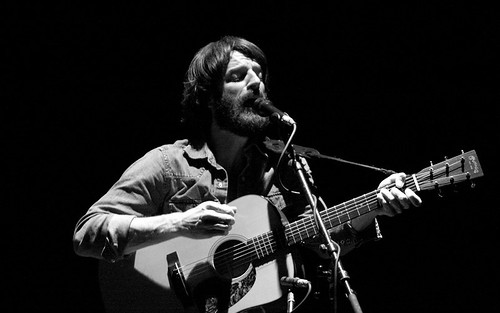
![[JPG-BLOG] IMG_5391](http://farm6.static.flickr.com/5089/5304527201_f04060d0ab.jpg)
![[JPG-BLOG2] IMG_5391](http://farm6.static.flickr.com/5129/5305121146_92fa2d7b20.jpg)
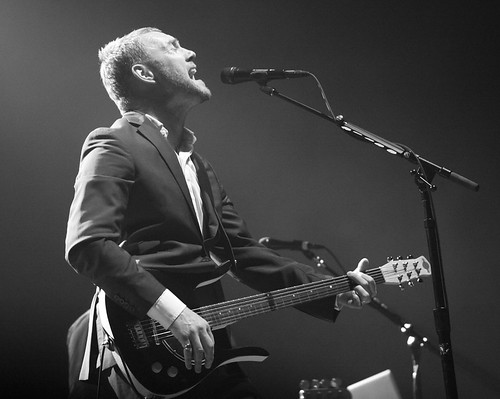
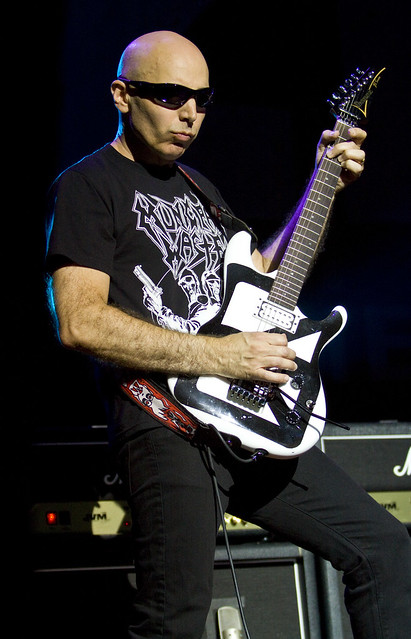
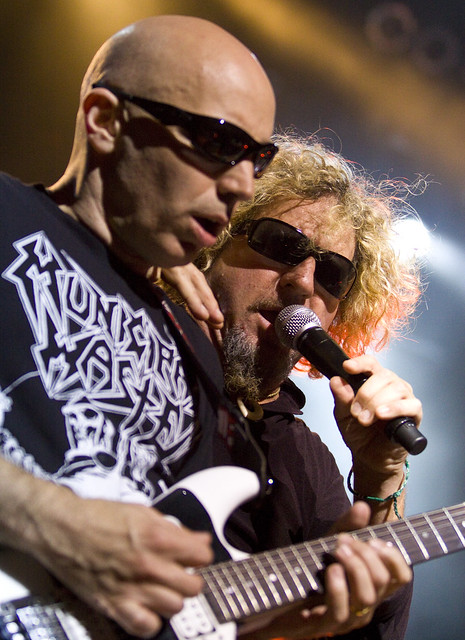
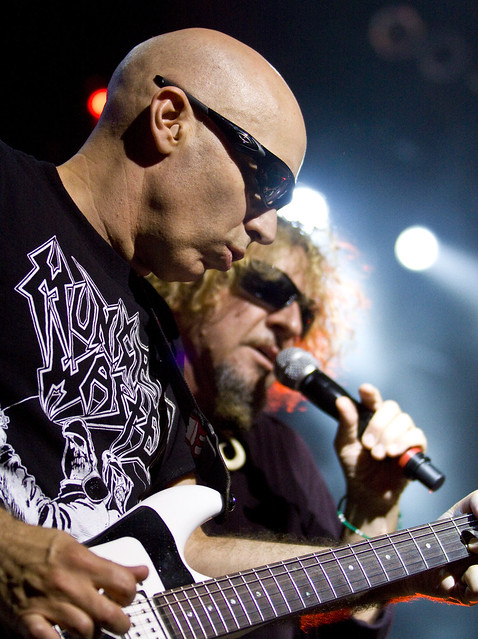


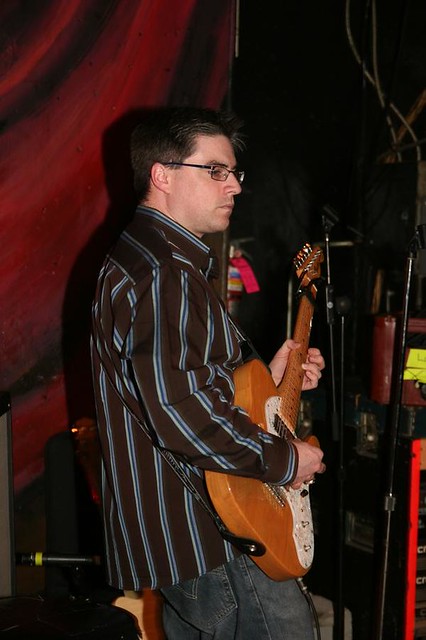
![[JPG-Blog] 800px-Looking_Down_Yosemite-Valley](http://farm6.static.flickr.com/5244/5261903441_f43ddd0508.jpg)
![[JPG-Blog] 800px-Twilight_wilderness_big](http://farm6.static.flickr.com/5282/5262534702_3ccec51445.jpg)
![[JPG] 800px-Church_Heart_of_the_Andes](http://farm6.static.flickr.com/5081/5261936179_24822b34ce.jpg)
![[JPG-Blog] 780px-Claude_Monet,_Impression,_soleil_levant,_1872](http://farm6.static.flickr.com/5170/5262005119_0895a5d326_z.jpg)
![[JPG] 766px-The_Boulevard_Montmartre_on_a_Winter_Morning](http://farm6.static.flickr.com/5287/5262021895_999de7597e_z.jpg)
![[JPG-Blog] 800px-Vincent_van_Gogh_(1853-1890)_-_Wheat_Field_with_Crows_(1890)](http://farm6.static.flickr.com/5046/5262668676_0629140edc_z.jpg)
![[JPG-Blog] Sheaves-of-Wheat-in-a-Field](http://farm6.static.flickr.com/5285/5262082941_1284a7871a_z.jpg)
![[JPG-Blog] Four-Cut-Sunflowers](http://farm6.static.flickr.com/5082/5262699970_528c83d9e1_z.jpg)
![[JPG-BLOG] IMG_9661](http://farm6.static.flickr.com/5163/5262768124_faa442c814_z.jpg)
![[JPG] IMG_9661](http://farm6.static.flickr.com/5130/5262767656_aeb9928444_z.jpg)
![[JPG] IMG_2039](http://farm6.static.flickr.com/5166/5262816850_8365d858c6_z.jpg)
![[JPG-Blog] 605px-The_Garden_in_Flower_Claude_Oscar_Monet_1900](http://farm6.static.flickr.com/5250/5262030683_41a3f4f096_z.jpg)
![[JPG] IMG_2104](http://farm6.static.flickr.com/5126/5262892294_af73d5bf98_z.jpg)
![[JPG] IMG_2173](http://farm6.static.flickr.com/5166/5262251013_d202a7d14b_z.jpg)
![[JPG] IMG_2384](http://farm6.static.flickr.com/5168/5262892288_2fb0b834a0_z.jpg)
![[JPG] IMG_9924](http://farm6.static.flickr.com/5004/5262318095_4ffa8733a6_z.jpg)
![[JPG2] IMG_6361](http://farm6.static.flickr.com/5286/5258341654_941304c2b9_z.jpg)
![[JPG-Blog]
IMG_3127](http://farm6.static.flickr.com/5088/5257879829_3881f8c109_b.jpg)
![[JPG-Blog]
IMG_3128](http://farm6.static.flickr.com/5162/5258490070_bcabfd19fb_b.jpg)
![[JPG-Blog]
IMG_3129](http://farm6.static.flickr.com/5004/5257881237_e2587a7cbf_b.jpg)
![[JPG-Blog]
IMG_3130](http://farm6.static.flickr.com/5124/5257881931_78cb6561a9_b.jpg)
![[JPG-Blog]
IMG_3131](http://farm6.static.flickr.com/5282/5257882653_5eefdc1fb2_b.jpg)
![[JPG-Blog]
IMG_3132](http://farm6.static.flickr.com/5045/5258493034_ea6eb40529_b.jpg)




